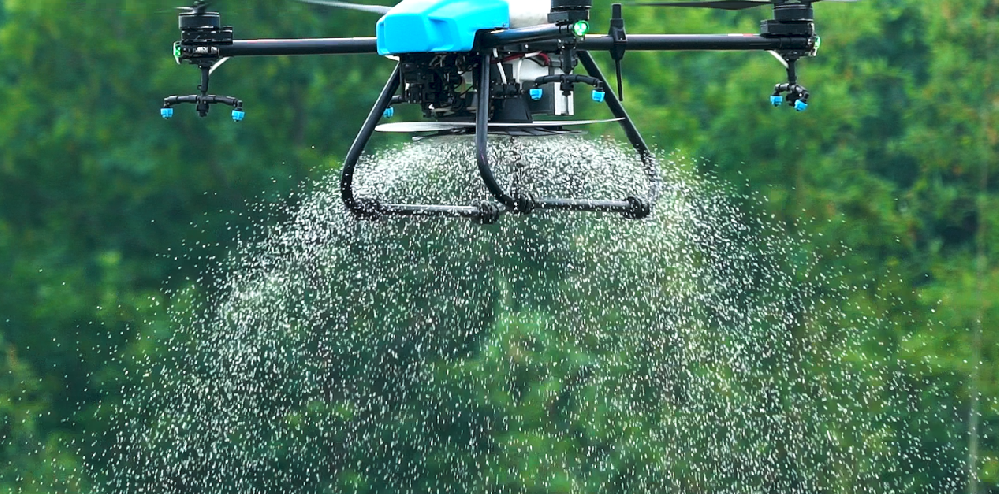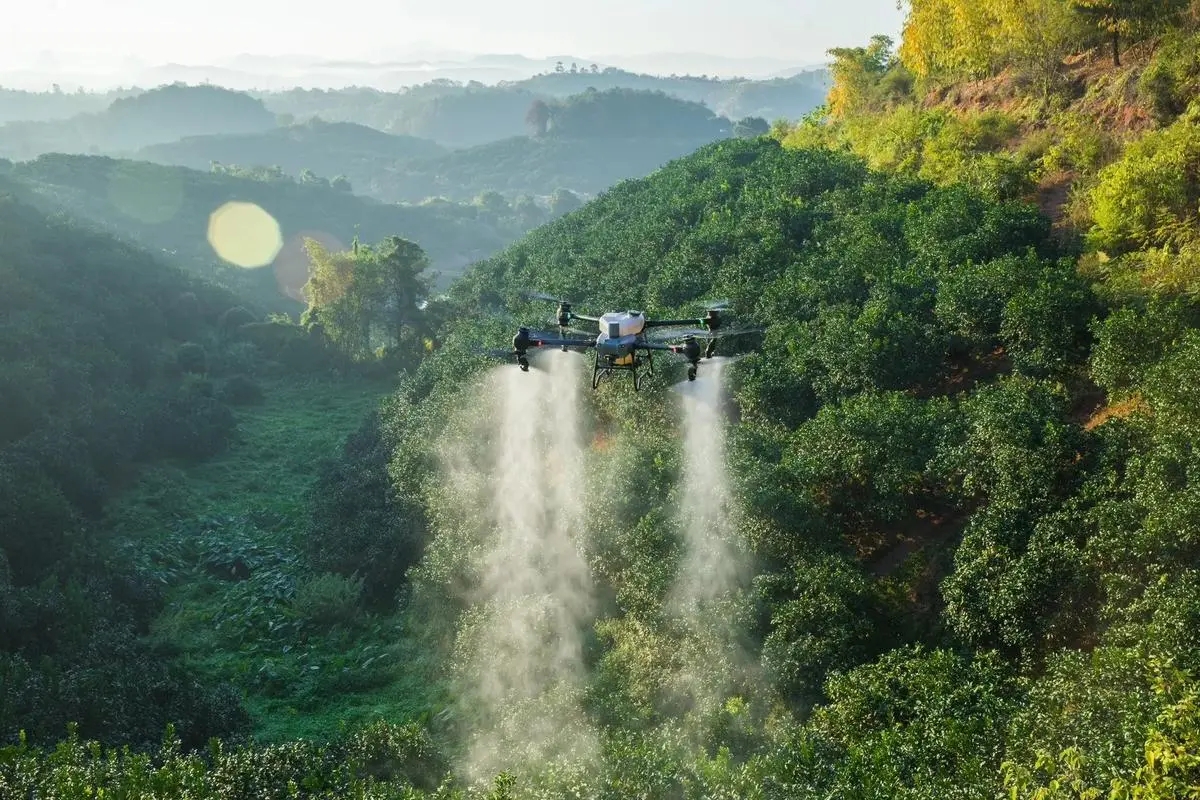

— Blogs —
—Products—
 Consumer hotline +8618073152920
Consumer hotline +8618073152920 WhatsApp:+8615367865107
Address:Room 102, District D, Houhu Industrial Park, Yuelu District, Changsha City, Hunan Province, China
Product knowledge
Time:2024-05-05 17:24:05 Popularity:411
Meteorological data is crucial for plant protection drones. By collecting and analysing meteorological data, drones can better plan flight paths and operating times to maximise spraying effectiveness and crop protection. Information on wind speed and direction, temperature, humidity, and precipitation conditions can help drones intelligently adjust flight altitude, speed, and spray volume to achieve precise application and reduce drug waste and environmental pollution. The following are some specific impact aspects:

1. Wind impact: The impact of wind on the quality of plant protection drone operation is mainly manifested in the deposition and drift of droplets. 2 levels of breeze is conducive to the deposition of droplets and the drift distance is small, but 3 levels of wind speed will result in the reduction of the deposition of droplets and an increase in the drift of droplets. This may result in the pesticide not being accurately and uniformly sprayed on the target crop, thus affecting the control effect. Therefore, plant protection UAVs need to consider the wind factor when operating and choose the appropriate wind speed conditions for operation.
2. Wind direction: Changes in wind direction will also affect the operational quality of the plant protection drone. As fog droplets drift with the wind, there may be pesticide components in the air downwind of the plant protection drone, leading to changes in the actual spraying area. This may result in non-target areas being contaminated with pesticides while target areas are not adequately covered with pesticides. Therefore, it is necessary to pay close attention to changes in wind direction during operation and take appropriate measures to reduce drift.
3. Temperature impact: Temperature also has an impact on the operational quality of plant protection UAVs. Excessively high or low temperatures will affect the nature and effect of the liquid. For example, high temperatures can accelerate the evaporation of the liquid, leading to a reduction in the amount of droplets deposited; while low temperatures may make the liquid sticky, affecting the spraying effect. In addition, temperature affects the battery performance of plant protection UAVs, which in turn affects their operating time and stability. Therefore, it is necessary to consider the temperature factor during operation and choose a suitable time period for operation.
4. Impact of precipitation: Precipitation has a direct impact on the operational quality of plant protection drones. It cannot operate on rainy days because rain will wash away the pesticides sprayed on the surface of crops, resulting in lower control effect. At the same time, rain and moisture will also affect the flight performance and sensor accuracy of the plant protection drone, increasing the difficulty and risk of operation. Therefore, it is necessary to pay attention to the weather forecast before operation and avoid operation under precipitation weather.
5. Operation time selection: Plant protection drone operations need to be carried out under suitable weather conditions to ensure operational effectiveness and safety. For example, clear, windless weather conditions are most favourable for UAV flight operations, as this can reduce wind resistance, improve flight efficiency and reduce operational risks caused by excessive wind.
6. Operation area planning: Meteorological data can also help plan the operation area of plant protection drones. For example, based on wind direction and speed, flight routes can be optimised to ensure that the drone can efficiently cover the target area and avoid the effects of wind on pesticide spraying.

7. Pesticide use strategies: Different meteorological conditions may require adjustments to pesticide use strategies. For example, in hot weather, the volatilisation rate of pesticides will be accelerated, and it may be necessary to increase the amount of pesticides used or adjust the spraying method to ensure that the pesticides can adequately cover and penetrate into the crops. Whereas, in cold weather, the activity of pesticides may be reduced and it may be necessary to select pesticide varieties that are more suitable for cold environments.
8. Flight height and speed: Meteorological data can also affect the flight height and speed of plant protection drones. For example, in windy conditions, it may be necessary to reduce flight height and speed to ensure flight stability and safety. And in the case of high temperature, it may be necessary to increase the flight altitude to reduce the temperature of the airframe to avoid problems such as overheating of the motor.
9. Emergency response: Meteorological data can also help plant protection drone teams develop emergency response strategies. For example, when bad weather is predicted to be imminent, the operation can be ended early and the UAV can be arranged to return to base to avoid equipment damage or operation failure due to weather.
In summary, meteorological data has an important impact on the operation strategy of plant protection drones. By monitoring and analysing meteorological data in real time, it is possible to optimise the operation time, area planning, pesticide use strategy, flight height and speed, etc., to improve the operational efficiency and safety of plant protection drones. At the same time, it can also help teams develop emergency response strategies to ensure that they can react quickly and minimise losses in adverse weather conditions.
Prev:Introduction of Small Automatic Weather Station
Next:Weather station: device for monitoring and recording meteorological elements
Related recommendations
Sensors & Weather Stations Catalog
Agriculture Sensors and Weather Stations Catalog-NiuBoL.pdf
Weather Stations Catalog-NiuBoL.pdf
Related products
 Combined air temperature and relative humidity sensor
Combined air temperature and relative humidity sensor Soil Moisture Temperature sensor for irrigation
Soil Moisture Temperature sensor for irrigation Soil pH sensor RS485 soil Testing instrument soil ph meter for agriculture
Soil pH sensor RS485 soil Testing instrument soil ph meter for agriculture Wind Speed sensor Output Modbus/RS485/Analog/0-5V/4-20mA
Wind Speed sensor Output Modbus/RS485/Analog/0-5V/4-20mA Tipping bucket rain gauge for weather monitoring auto rainfall sensor RS485/Outdoor/stainless steel
Tipping bucket rain gauge for weather monitoring auto rainfall sensor RS485/Outdoor/stainless steel Pyranometer Solar Radiation Sensor 4-20mA/RS485
Pyranometer Solar Radiation Sensor 4-20mA/RS485
Screenshot, WhatsApp to identify the QR code
WhatsApp number:+8615367865107
(Click on WhatsApp to copy and add friends)